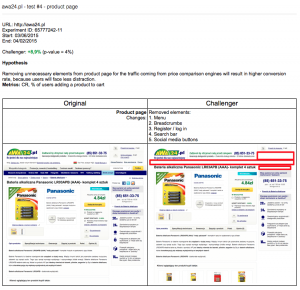Positioning is one of the fundamental elements of marketing, both for consumer products and B2B (Business to Business). Positioning is a brand’s unique way of providing value to its customers. Where does a brand sit in the hearts and minds of customers? These associations that consumers hold with a brand reflect their positioning.
This week’s blog topic explores positioning as a marketing strategy and how it relates to other marketing strategies. Five common positioning strategies are also discussed.
“A position that takes into consideration not only a company’s own strengths and weaknesses, but those of its competitors as well.” (Ries & Trout, 2001)
What Is Positioning?
Firms use positioning to create an image of a brand’s product or service in the mind of a target customer. Positioning defines how the brand’s offering is unique, how it provides a distinct benefit to customers. Businesses use marketing to communicate their market position to customers and influence their perception of the brand’s products or services. Marketing establishes the brand identity, influencing consumer perceptions of its position in the market relative to the alternatives available from competitors.
“Positioning is not what you do to a product. Positioning is what you do to the mind of the prospect. That is, you position the product in the mind of the prospect.” (Ries & Trout, 2001)
Before determining its position in the market, a firm should decide on a segment of the market that they want to target. This segment of the market should be profitable?—?either there are many customers, or it is a niche in the market that presents an opportunity due to a lack of competition. This is where positioning comes in. A business must decide how to make their brand as attractive as possible to this group of customers they want to target. This target market defined by demographics such as gender, location and age as well as criteria based on their consumer behaviour.
Unique Selling Proposition
Effectively positioning a product or service gives it a USP (Unique selling proposition). A USP is an attractive feature or characteristic of a brand that differentiates it from similar alternatives. In a modern marketplace cluttered with so many choices with similar benefits, you want your brand to stand out from the rest. It becomes more memorable and can have a competitive advantage over alternatives. Your USP is your unique benefit to entice customers to purchase your brand over another. Brands must communicate This USP with their target audience. This is where positioning comes in.
McDonald’s is a notable example of using a USP to help position their brand. They are the world’s most widely known fast-food brand and compete with hundreds of other fast food outlets. They do not try and position themselves as the fastest, cheapest or best tasting. Instead, their USP is that they are a family-friendly restaurant. The children’s menu items, the free toy with a kid’s meal, the playgrounds. They position themselves to target families.
Positioning statement
A USP and positioning statement is similar. The biggest difference is that a USP is product or service-centric and focuses on what sets your product or service apart from competitors; where a business creates their positioning statement after the USP, focusing on the primary benefit of the product or services for their target market. Businesses need to ask themselves, “How do I want our brand to be perceived?”
A positioning statement should be no longer than a paragraph, and should discuss the following:
· First, the positioning statement begins with describing your target market and what their specific needs or goals are. Market research helps businesses to understand their market and customers more intimately.
· Define what category your product or service belongs to and how it meets the needs of consumers. Customers need a reference point to provide context to evaluate a brand’s offering.
· What differentiates your product or service from the alternatives? One point of differentiation is best, stating your difference from the customer’s perspective. How does your differentiator will help solve the customer’s problem or help them achieve their goals?
· Explain why consumers in your target market should believe your brand’s claims. Consumers must see credibility in your positioning, so provide evidence to justify the claim of your brand in your positioning. Do not just say you are the fastest or best quality, state HOW you are.
“There is a positive relationship between company performance (profitability/efficiency) and well-formulated and clearly-defined positioning activities.” (Kalafatis, Tsogas & Blankson, 2000)
Determining a Positioning Strategy
A successful positioning strategy relies on a deep understanding of the marketplace you want to compete in. It identifies how your company is different from the competitors and the conditions and opportunities in the marketplace. A big mistake that many businesses make is assuming that positioning is just a marketing strategy. It should be one of the foundations of the business strategy. After all, you cannot position a product as a high-quality offering in your marketing if the product itself cannot back up those claims.
Customers can recognise a clear positioning strategy?—?they understand whether a brand is competing on price or quality. Positioning must be a cohesive effort between the business strategy and sales and marketing tactics. It is far more than just a communication strategy. This is the only way the product or service will deliver on customer expectation and the promises of its positioning. Organisations must clearly define their positioning across the value chain, otherwise, communication loses focus and can become confusing.
There are five main strategies upon which businesses can base their positioning.
1. Positioning based on product characteristics
Using product characteristics or benefits as a positioning strategy associates your brand with a certain characteristic that is beneficial to customers. For example, in the automobile industry, Toyota’s position in the market is reliability, Porsche’s position is performance and Volvo’s position is safety. Brands consistently communicate the most unique benefit or characteristic of the product with consumers.
“Volvo owns ‘safety.’ BMW owns ‘driving’…” (Ries & Trout, 2001)
2. Positioning based on price
Positioning your products or services based on price is associating your brand with competitive pricing. Usually, with pricing positioning strategy, a brand aims to be the cheapest or one of the cheapest in the market, and value becomes their position. For example, Supermarket chains often have a house brand with very low-price products in many product categories. Their lower logistical and distribution costs allow them to price their products lower than the competitors, so price-sensitive buyers will often purchase them without knowing the price because they know it is often the cheapest option.
Brands can also position based on price if they find a gap in the market at a certain price point. Being the only option in a certain price range becomes your market position. Often brands extend their product lines to fill a gap in the market.
3. Positioning based on quality or luxury
Often the price and quality of a product align, certainly in the mind of the consumer, as the high price is often associated with high quality. But positioning a product based on its high quality or ‘luxury’ is different from positioning based on price. Often these brands do not communicate their price point, but instead high quality or prestige is the focal point of communication, to create a desire so customers want the product regardless of the price.
Note that luxury does not always mean better quality, but customers still believe it is better because of the reputation of the brand due to their long-term brand positioning strategies. For example, a $ 200,000 Rolls Royce car, the epitome of luxury, is likely to have a lower build quality than a $ 30,000 Hyundai.
4. Positioning based on product use or application
Associating your product with a particular use is another way to position your brand in the market. For example, meal replacement supplements can be of use to anyone lacking time or wanting a quick convenient meal. There are also meal replacements designed specifically for people who want performance in the gym, so high in calories and added vitamins and minerals. Other meal replacements are for people on a diet, so they are low in calories and would not provide much energy for somebody’s workout.
Often the former meal replacement target males and the diet low-calorie option target females. Both are meal replacements, but different positioning.
5. Positioning based on competition
Competitor based positioning focuses on using the competition as a reference point for differentiation. Brands highlight a key difference their product/service offers in their marketing to make it seem favourable and unique compared to other options in the marketplace. The product or services becomes unique.
Brands can also use the competition as a reference point to follow a similar strategy. If a particular brand has a large market share, their positioning strategy must be attractive to a large group of customers, so you try and convert some of their customers by offering a similar product with similar benefits at the same price point.
Positioning Perceptual Maps
Businesses can create a perceptual map of the positioning of the dominant brands in a marketplace to identify any gaps and opportunities in that market.
Positioning perceptual map example
The positioning map compares brands competing in a marketplace by illustrating consumer perceptions of those brands by using two key variables.
For example, businesses can apply price and quality for most markets; but the map should focus on the primary consumer needs or product benefits you want to understand, which will vary depending on the market. See below for an example of a positioning map.
In conclusion, your positioning in the market determines where your brand sits relative to competitors. It is important for brands to have a point of difference and to emphasise it in their marketing.
Business & Finance Articles on Business 2 Community
(158)







